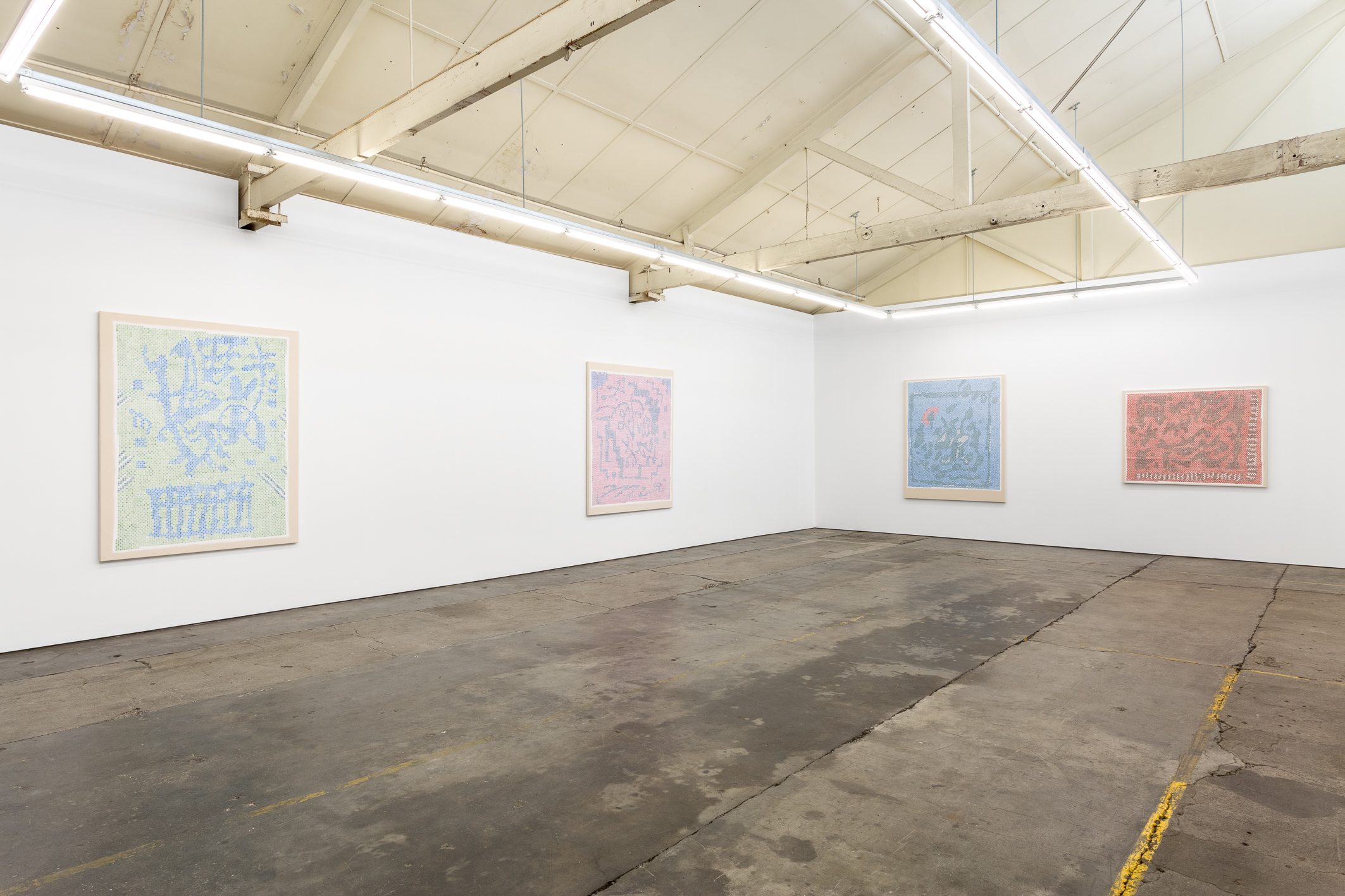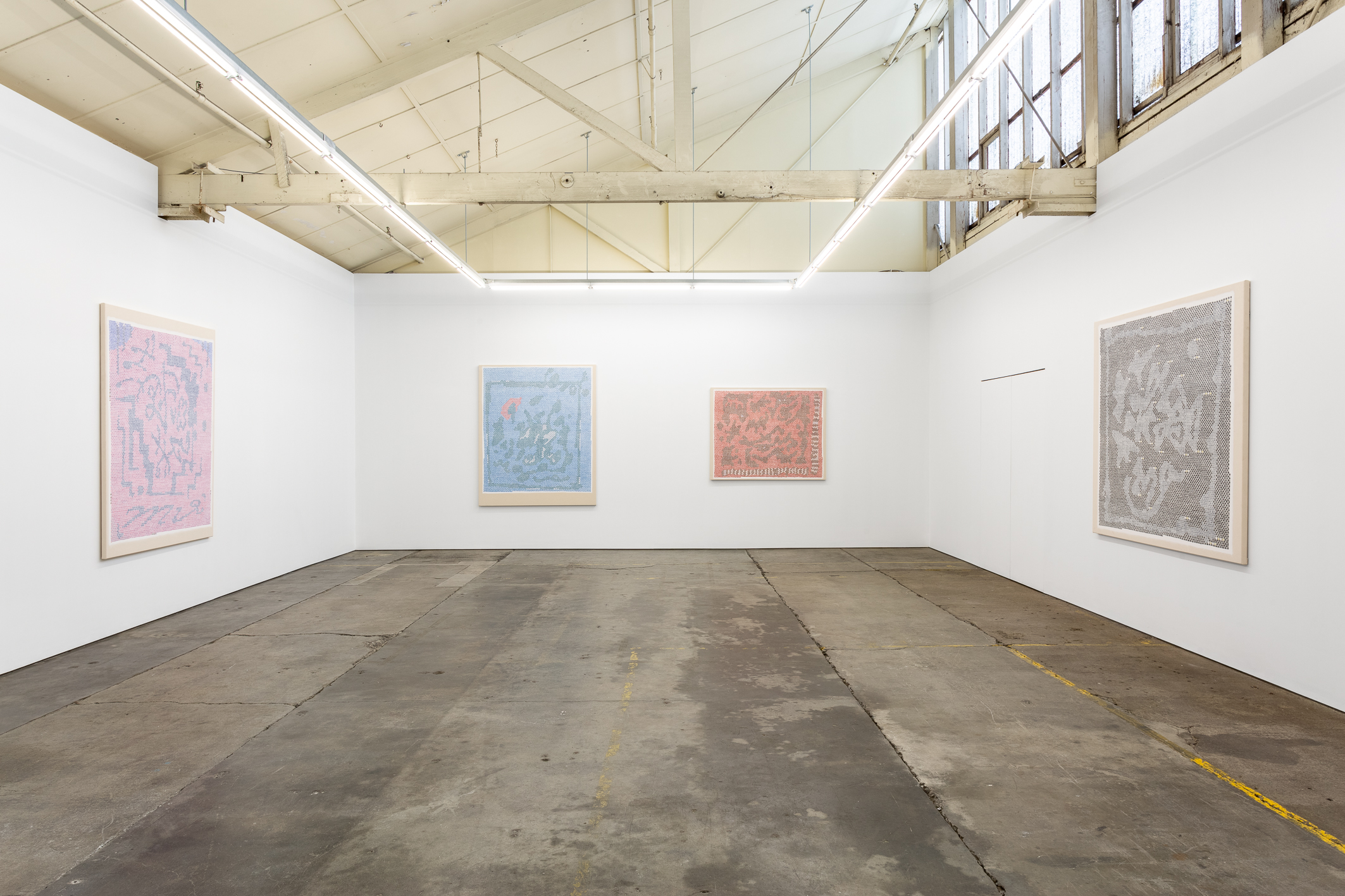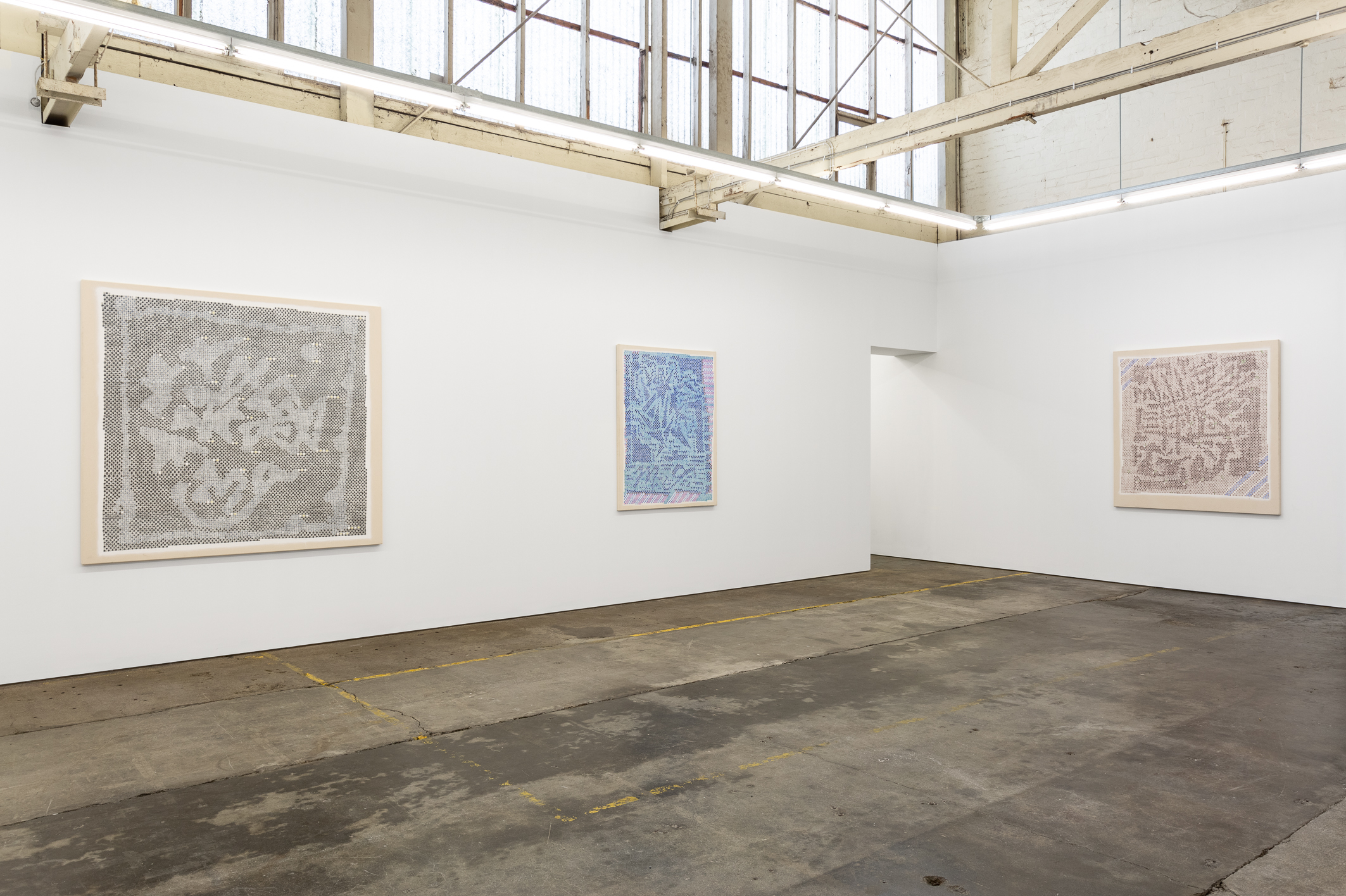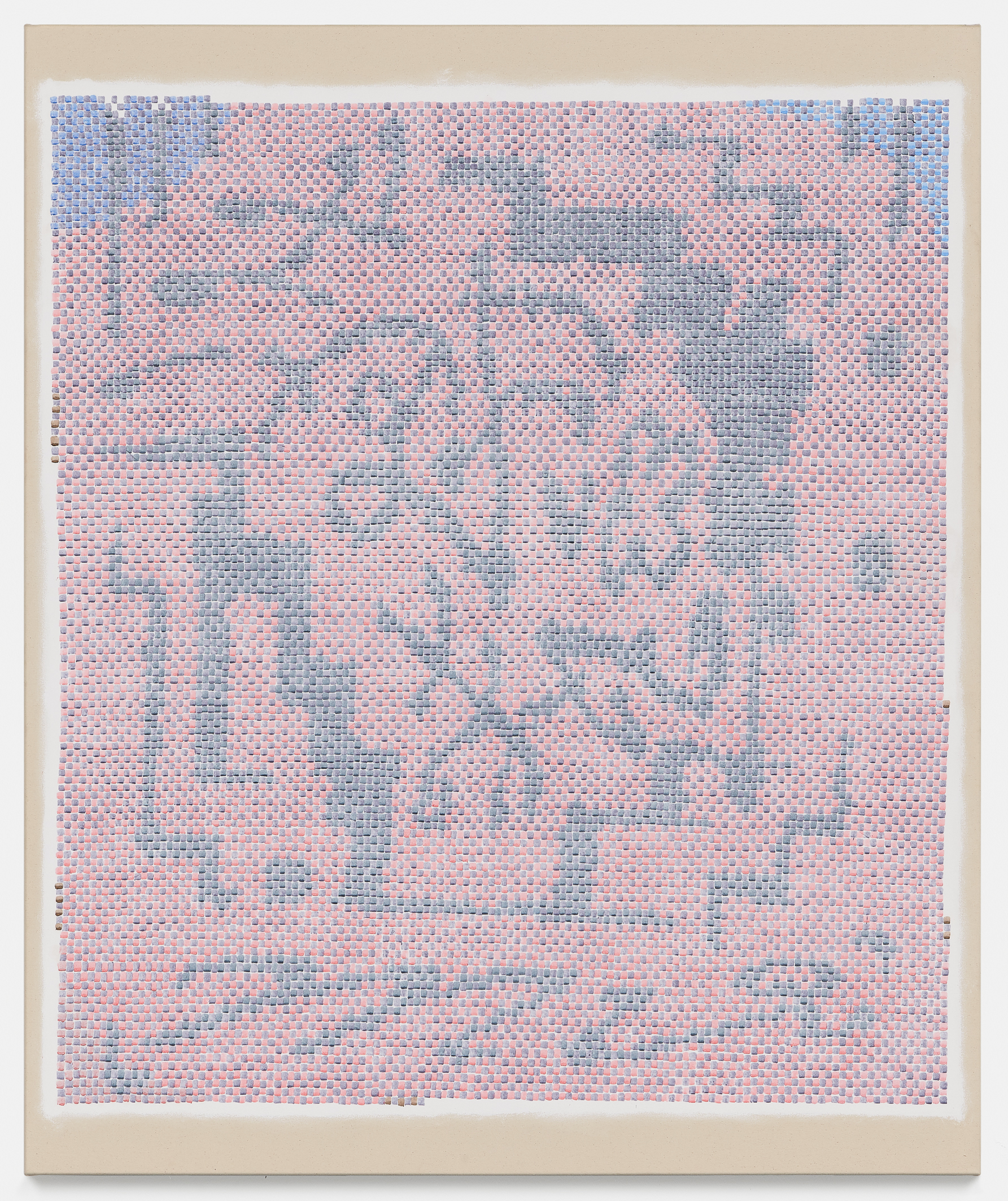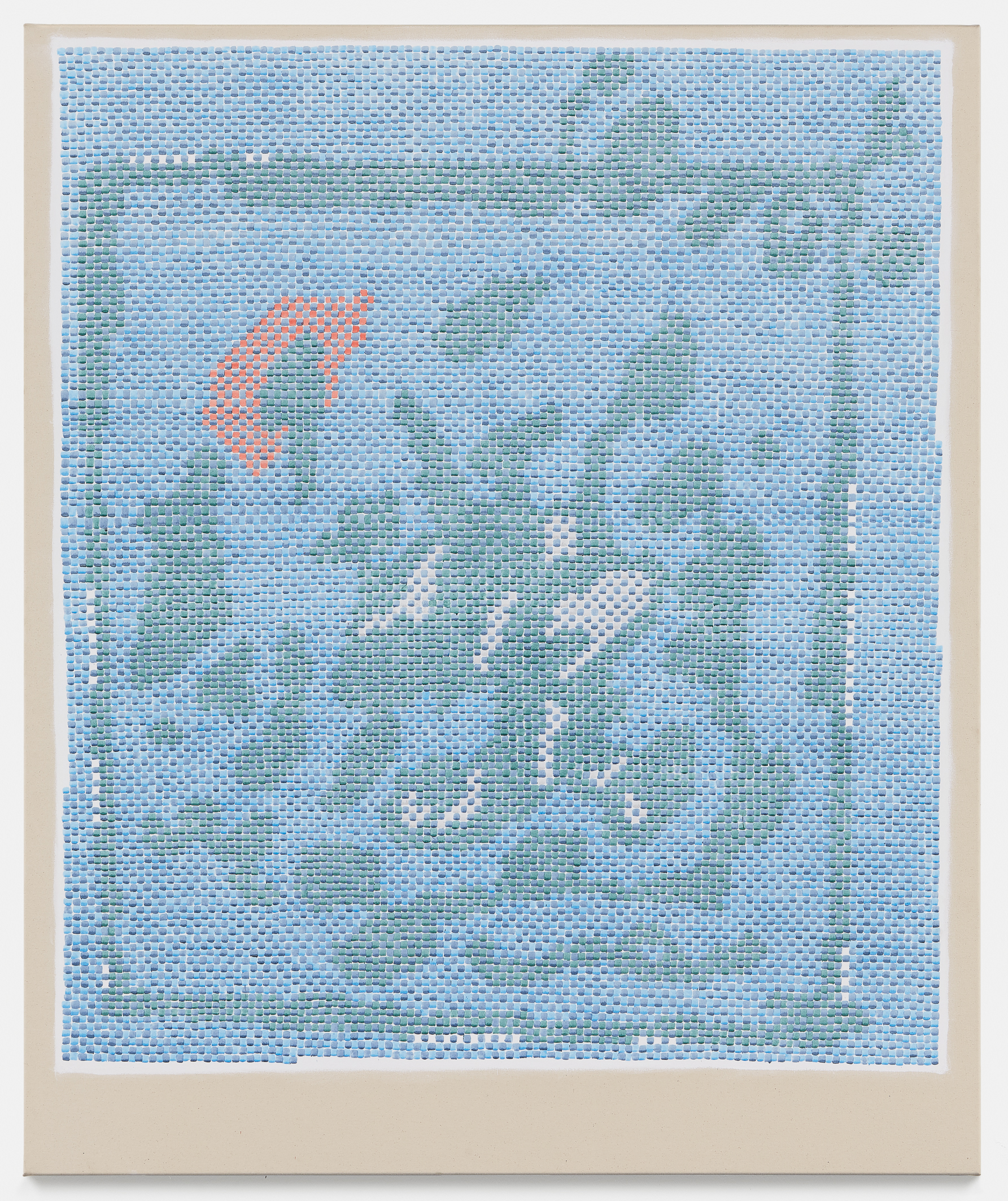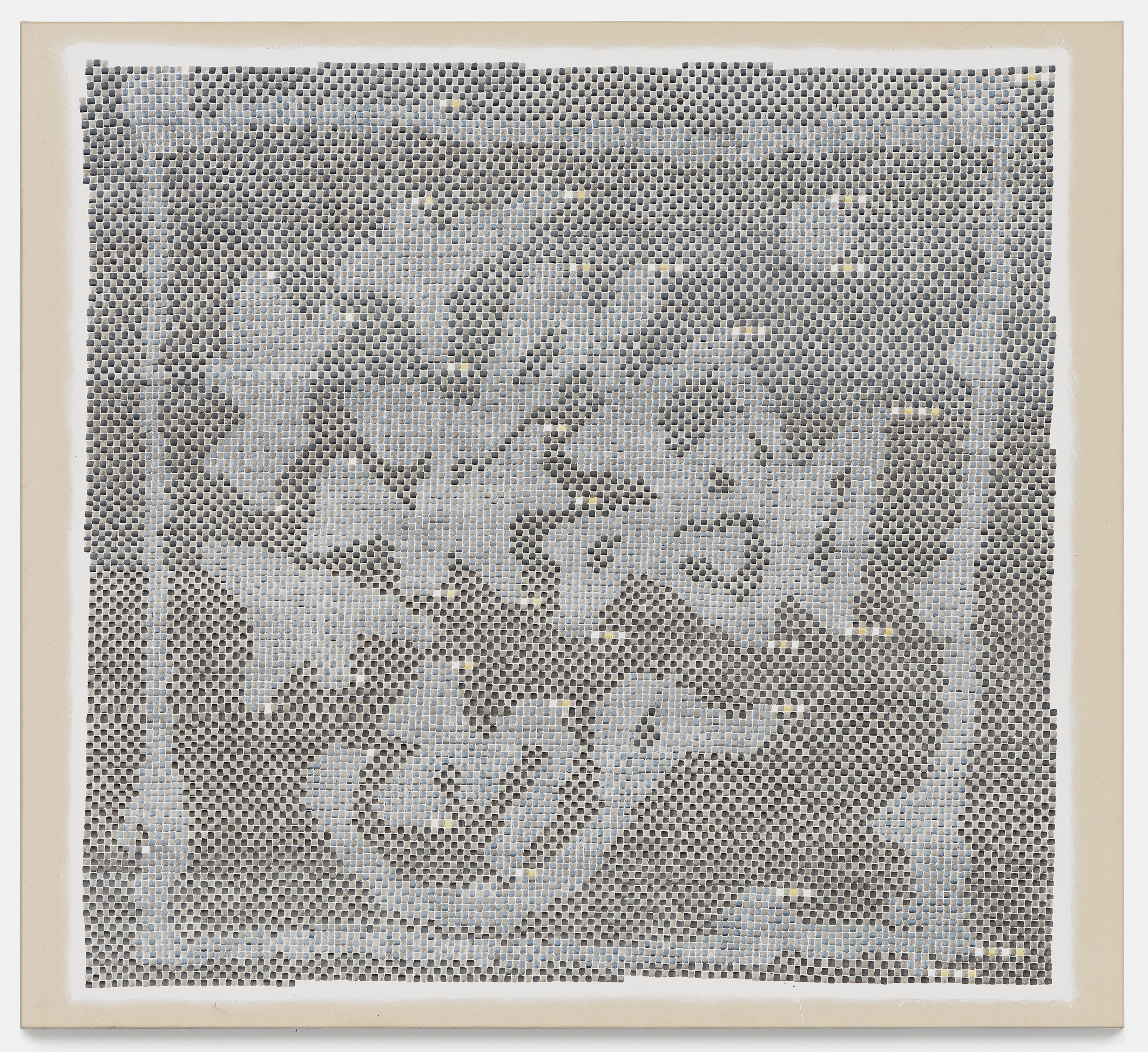Martin George
03.08.2019 - 07.09.2019
From little things bigger little things grow
It would be easy and topical to declare “the painting is a stamp”. From here we appear to get at least two conclusions -
1) The painting “gets” an artist places.
2) The painting must be sanctioned by the stamp-issuing government.
The first point seems safe - after all how else would an artist get places if not by virtue of work they produce? Of course this must be taken with a healthy pinch of salt. Besides the plethora of contextual and often arbitrary factors that lead particular artists to success, both the painting and the stamp in contemporary culture are anachronistic. Media technology has digitised the letter, along with basically everything else. There’s a parallel novelty in the holiday postcard received and the painted picture observed. Indeed, this is emblematised by the (exited through) museum gift shop, in which art dissolves into generalised culture. The postcard or the painting? (These days its hard to tell what comes first!)
The second conclusion is more controversial, for the rebellious stamp cannot exist. A stamp without state authorisation ceases to be itself. The postage stamp is a technology that makes big things small - a symbol of a system of communications - the crystallised residue of a looming official project. Empire dispersed. Transformed it into a necessity for communication. Licking a stamp you probably won’t remember may well be whole point. The first Australian stamp featured a kangaroo on a map of Australia, it cost two pounds.
But if the painting is a stamp, where and by whom is the painting sanctioned? And if the first conclusion seems relatable to our experience with art, is this license conditional on it being able to “send” the artist (or indeed the art itself) places? Where does painting end and economy begin?
So we have an exhibition of paintings named ‘Box of Stamps’, but these are in fact paintings that inverse the operation of the stamp. They make small things big. But what things? Where are we looking?
Maybe nowhere. And maybe this is the point. Martin George’s painting practice rehearses the operation of the postage stamp, and in doing so capsizes it. A drawing on a scrap of paper is projected into a computer program, and is altered to a grid format which is then flung out of the program onto the canvas freehand. Figuration, landscape, narrative, and personal branding converge on the colour-grid. The small drawing becomes big, but it only ever refers to itself - as it enlarges, it envelops improvised strokes until planned and unplanned become indistinguishable - the painting becomes the residue of the process, which generated the painting. A closed system, a box of stamps not being sent anywhere.
If these paintings are stamps, they are exactly the type of stamp that ceases to be a stamp. And if you want to sell them as postcards that’s fine, but you’d only be traversing George’s own process; he’s already made the point. That is to say, these paintings sanction themselves, flaunt their materiality, look in not out. And they’re big, hard to ignore.
Text by Jeremy George
Photography by Christo Crocker
Press:
Martin George: Box of Stamps
Published in partnership with KINGS Artist-Run Emerging Writer’s Program
Henry Law
It would be easy and topical to declare “the painting is a stamp”. From here we appear to get at least two conclusions -
1) The painting “gets” an artist places.
2) The painting must be sanctioned by the stamp-issuing government.
The first point seems safe - after all how else would an artist get places if not by virtue of work they produce? Of course this must be taken with a healthy pinch of salt. Besides the plethora of contextual and often arbitrary factors that lead particular artists to success, both the painting and the stamp in contemporary culture are anachronistic. Media technology has digitised the letter, along with basically everything else. There’s a parallel novelty in the holiday postcard received and the painted picture observed. Indeed, this is emblematised by the (exited through) museum gift shop, in which art dissolves into generalised culture. The postcard or the painting? (These days its hard to tell what comes first!)
The second conclusion is more controversial, for the rebellious stamp cannot exist. A stamp without state authorisation ceases to be itself. The postage stamp is a technology that makes big things small - a symbol of a system of communications - the crystallised residue of a looming official project. Empire dispersed. Transformed it into a necessity for communication. Licking a stamp you probably won’t remember may well be whole point. The first Australian stamp featured a kangaroo on a map of Australia, it cost two pounds.
But if the painting is a stamp, where and by whom is the painting sanctioned? And if the first conclusion seems relatable to our experience with art, is this license conditional on it being able to “send” the artist (or indeed the art itself) places? Where does painting end and economy begin?
So we have an exhibition of paintings named ‘Box of Stamps’, but these are in fact paintings that inverse the operation of the stamp. They make small things big. But what things? Where are we looking?
Maybe nowhere. And maybe this is the point. Martin George’s painting practice rehearses the operation of the postage stamp, and in doing so capsizes it. A drawing on a scrap of paper is projected into a computer program, and is altered to a grid format which is then flung out of the program onto the canvas freehand. Figuration, landscape, narrative, and personal branding converge on the colour-grid. The small drawing becomes big, but it only ever refers to itself - as it enlarges, it envelops improvised strokes until planned and unplanned become indistinguishable - the painting becomes the residue of the process, which generated the painting. A closed system, a box of stamps not being sent anywhere.
If these paintings are stamps, they are exactly the type of stamp that ceases to be a stamp. And if you want to sell them as postcards that’s fine, but you’d only be traversing George’s own process; he’s already made the point. That is to say, these paintings sanction themselves, flaunt their materiality, look in not out. And they’re big, hard to ignore.
Text by Jeremy George
Photography by Christo Crocker
Press:
Martin George: Box of Stamps
Published in partnership with KINGS Artist-Run Emerging Writer’s Program
Henry Law
